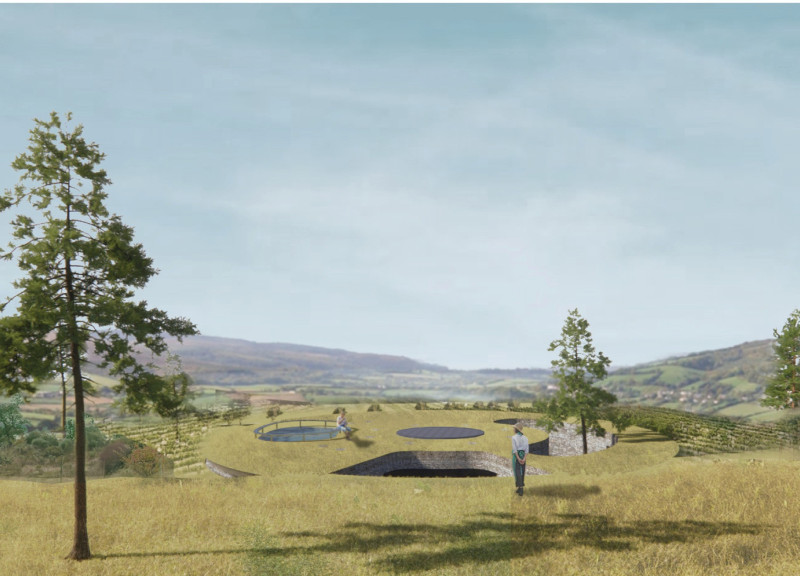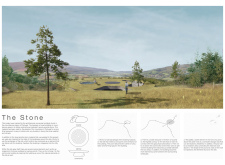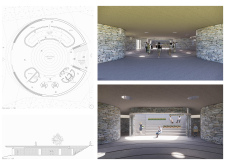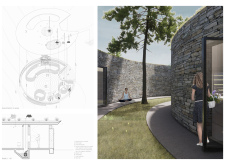5 key facts about this project
The design is located in the mountainous region of Portugal, drawing from the local architectural style to shape its form and function. The aim is to connect the building with the natural landscape and foster community interaction. By considering the contours of the land, the design promotes a sense of harmony between the structure and its surroundings while addressing the needs of the community.
Site Integration
The building blends with the site's natural features, creating a layout that encourages movement and flow. At its center, a gathering space invites people to come together, facilitating social connections within the community. The design prioritizes accessibility, making it easy for occupants to navigate the space and interact with one another.
Natural Elements
The architecture thoughtfully incorporates the existing stones scattered across the site. These natural elements are woven into the design, reinforcing the connection to the landscape. This approach not only enhances the visual appeal of the building but also deepens the relationship between the structure and its environment, acknowledging the uniqueness of the site.
Water Resource
A key aspect of the design is the pond positioned at one of the higher points of the site. This water feature establishes a link between the building and the agricultural land nearby, promoting interaction between different areas. The presence of water adds ecological value and provides a serene environment for the community, enhancing both functionality and aesthetics.
Materiality
Local granite stone is used in the construction, reflecting materials commonly found in the region. This choice of material is significant as it connects the project to traditional building practices while ensuring durability in the face of local weather conditions. The use of granite contributes to the overall stability of the design and helps establish a strong sense of place.
The final design encourages a relationship with the surroundings, where each element serves a purpose. The integration of natural features, circulation paths, and material choices forms a cohesive environment that invites people to engage with the space.






















































